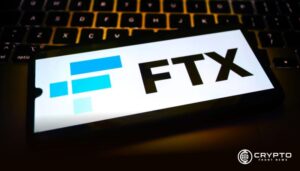- Paul Grewal criticizes the SEC’s vague response to FTX’s plan to repay creditors using stablecoins and other crypto assets.
- The SEC reserves the right to challenge FTX’s repayment in crypto, raising concerns about legality and creditor protections.
- Decentralized platforms have launched tokenized trading of FTX claims, while FTX rejects restarting the exchange for repayment.
Paul Grewal, Chief Legal Officer at Coinbase, has raised questions about the U.S. Securities and Exchange Commission’s (SEC) stance regarding FTX’s plan to repay creditors using stablecoins or other cryptocurrencies. Grewal’s comments highlight ongoing concerns about the SEC’s approach to cryptocurrency regulations, especially in the context of high-profile bankruptcy cases like FTX.
SEC’s Ambiguous Position on Crypto Repayments
FTX, a collapsed cryptocurrency exchange, has been exploring multiple strategies to maximize creditor recovery during its bankruptcy proceedings. These include potentially relaunching the exchange to generate revenue or issuing new tokens that represent creditor claims, which could be traded on secondary markets.
However, FTX’s current plan involves repaying creditors with U.S. dollar-pegged stablecoins, a strategy now under scrutiny by the SEC. In a recent filing, the SEC clarified that it “is not opining as to the legality, under the federal securities laws, of the transactions outlined in the Plan,” but emphasized it “reserves its rights to challenge transactions involving crypto assets.”
The SEC also objected to a provision in the bankruptcy plan that would shield FTX and its debtors from future legal actions by creditors. This stance aligns with the objection from the U.S. Trustee overseeing the FTX bankruptcy, who argued that the plan should not indemnify the FTX debtors. Both regulators seem concerned about the potential legal implications and transparency surrounding the proposed repayment plan.
Decentralized Trading and Rejected Proposals
Meanwhile, decentralized marketplaces like Found.xyz and Figure Markets have introduced trading for tokenized FTX claims. This innovative approach allows creditors to trade their claims as digital assets, reflecting the evolving nature of the crypto landscape. One crypto CEO even described it as “one of the most crypto things” ever seen.
However, FTX, under the leadership of CEO John Ray III and legal firm Sullivan & Cromwell, dismissed the idea of restarting the exchange. They cited a lack of investor interest and the capital required to relaunch the offshore platform, pushing instead for the current plan to repay creditors in cash or stablecoins.
Regulatory and Legal Concerns Surrounding FTX’s Bankruptcy Plan
Grewal’s remarks come amid a broader debate on regulatory clarity in the crypto space. He noted that the SEC did not make a definitive ruling on the legality of FTX’s repayment plan but hinted at potential future challenges.
“Why provide clarity to the market when threats and aspersions will do?” Grewal questioned, pointing out the uncertainty faced by investors and markets. His comments highlight a sentiment that clearer guidelines are needed from regulators to avoid ambiguity that may hinder the development of crypto-related financial recovery plans.
As the FTX bankruptcy case continues, the SEC’s involvement and the proposed repayment strategies will remain under the spotlight. The resolution of these issues could set significant precedents for how future cryptocurrency bankruptcies are handled and regulated.





